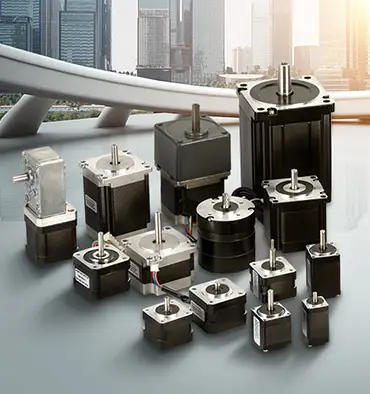How to calculate stepper motor steps?
Calculating the number of steps required for a stepper motor to rotate through a given angle is a crucial part of determining the performance of the motor. This information is used to calculate the step angle, speed, and torque of the motor and is important for selecting the right motor for a given application. In this article, we will explain how to calculate the number of steps required for a stepper motor to rotate through a given angle.
The first step in calculating the number of steps required for a stepper motor is to determine the type of motor. Stepper motors are classified into two main types: full-step and half-step. The type of motor determines the number of steps that are required for the motor to rotate through one complete revolution.
Full-step stepper motors require 200 steps to complete a full revolution, while half-step motors require 400 steps. This means that a full-step motor will rotate through 1.8 degrees per step, while a half-step motor will rotate through 0.9 degrees per step.
To calculate the number of steps required for a stepper motor to rotate through a given angle, you will need to know the step angle of the motor. This information can usually be found in the motor's specifications or by contacting the manufacturer.
Once you know the step angle of the motor, you can calculate the number of steps required by dividing the desired angle by the step angle. For example, if you want a stepper motor to rotate through 90 degrees and the step angle is 1.8 degrees, the number of steps required would be 50 (90 / 1.8 = 50).
In addition to the type of motor, there are several other factors that can affect the number of steps required for a stepper motor to rotate through a given angle. These include the drive mode, the current supplied to the motor, and the microstepping resolution.
Drive mode refers to the way in which the stepper motor is driven. There are two main drive modes: microstepping and full stepping. In microstepping mode, the motor is driven in small increments, which can reduce the number of steps required to rotate through a given angle. This is because the motor is able to move in smaller increments, which allows it to rotate more precisely.
The current supplied to the motor can also affect the number of steps required. Increasing the current can cause the motor to rotate more quickly, which can reduce the number of steps required. However, too much current can cause the motor to become overheated and may result in damage.
Finally, the microstepping resolution can also affect the number of steps required for a stepper motor to rotate through a given angle. Microstepping is a technique that allows the motor to move in small increments, which can improve the resolution and accuracy of the motor. Higher microstepping resolutions result in fewer steps being required to rotate through a given angle.
In conclusion, calculating the number of steps required for a stepper motor to rotate through a given angle is an important part of determining its performance. To do this, you will need to know the step angle of the motor and take into account factors such as drive mode, current, and microstepping resolution. By understanding these factors, you can choose the right stepper motor for your application and ensure optimal performance.


Leave a Reply